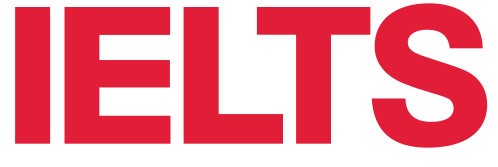- 最新消息
- 講座與活動
- 全球據點IDP AustraliaIDP BahrainIDP BangladeshIDP CambodiaIDP CanadaIDP ChinaIDP EgyptIDP GhanaIDP Hong KongIDP IndiaIDP IndonesiaIDP IranIDP JordanIDP KenyaIDP KoreaIDP KuwaitIDP LebanonIDP MalaysiaIDP MauritiusIDP Middle EastIDP NepalIDP New ZealandIDP NigeriaIDP OmanIDP PakistanIDP PhilippinesIDP Saudi ArabiaIDP SingaporeIDP Sri LankaIDP ThailandIDP TurkeyIDP UAEIDP VietnamIDP Corporate
- 社交
- 繁體中文(台灣)
- Published: 30 August 2022
T/F/NG and Y/N/NG
This question type frequently occurs on both the Academic and General version of the IELTS Reading test. Many candidates struggle with answering these questions and because of this, lose confidence or even second guess themselves. Learning about each question type and how to answer them is the key to success.
T/F/NG vs Y/N/NG
What is the difference between T/F/NG and Y/N/NG?
When the reading passage on the IELTS test is giving factual information about a topic, the question will be T/F/NG.
For example, read about 'Aphantasia' here. The question type is T/F/NG questions because the passage has facts about the disease.
When answering this type of question, you should ask yourself if the facts are true, false, or not given.
When the passage is discussing the opinion of the author, another person, or group of people, the question will be Y/N/NG.
For example, read 'How Babies Learn Language' here. The question type is Y/N/NG questions because the passage is about the opinion of the author.
When answering this type of question, you should ask yourself if the person’s opinion on the subject is true, false, or not given. If it is true, you can answer ‘Yes’, and if it is false, you can answer with ‘No’.
T/F/NG and Y/N/NG vs Candidates
Even though the question type is different, the strategy for answering them is the same. Here are some strategies for tackling T/F/NG and Y/N/NG questions.
When answering ‘True’ or ‘Yes’ to a question, the information in the passage and the question must match completely. It must match 100%.
For example, the reading states:
It has been calculated that 17 percent of cases of lung cancer can be attributed to high levels of exposure to second-hand tobacco smoke during childhood and adolescence.
While the question states:
Teenagers whose parents smoke are at risk of getting lung cancer at some time during their lives.
Both sentences are referring to teenagers or adolescents being at a higher risk of getting lung cancer. Because of this, the statement is ‘True’ or ‘Yes’.
If there is a piece of information in the question that is different from the passage, it would change the answer to ‘False’ or ‘No’. If information is missing, it may also be ‘False’.
For example, the passage states:
Smoking, it is believed, is responsible for 30 percent of all deaths from cancer.
While the question states:
Thirty percent of deaths in the United States are caused by smoking-related diseases.
The reading is discussing deaths related to cancer. However, the question is discussing all deaths in general, so, therefore, the answer is ‘False’ or ‘No’.
If the information in either the text or the question is missing, it could also be ‘Not Given’. This could be a whole idea or just a piece of information.
For example, the passage reads:
As an illustration of the health risks, in the case of a married couple where one partner is a smoker and one a non-smoker, the latter is believed to have a 30 percent higher risk of death from heart disease because of passive smoking. The risk of lung cancer also increases over the years of exposure, and the figure jumps to 80 percent if the spouse has been smoking four packs a day for 20 years.
The question that is asked is:
If one partner in a marriage smokes, the other is likely to take up smoking.
Here, the reading speaks about partners in marriage, but it doesn’t discuss the likelihood of a partner taking up smoking. For this reason, the answer is ‘Not Given’. Here, a piece of information is the same in the reading as well as the question. However, there is a piece of information missing.
In another example, the question reads:
Opponents of smoking financed the UCSF study.
Nowhere in the reading does it discuss whether or not opponents finance the study so this answer would be ‘Not Given’.
The reading and questions can be found here.
When doing T/F/NG or Y/N/NG questions, stay focused and keep it simple. Look at the question and compare it only to the reading. Do not think about your previous knowledge on the topic. Once you have assessed the question alone, decide if it is true, false, or not given.
By Ashlee Hunter
一個帳號滿足所有的留學需求
建立個人資料並解鎖各種功能,包括個人化學校課程推薦、快速追蹤申請進度等。

Book your IELTS test
Watch the story of lifelong dreams, passion and determination that truly reflects the journey of our IELTS test takers. IELTS is the breakthrough to a world of full of incredible.
Search for articles
Dive into our extensive collection of articles by using our comprehensive topic search tool.














